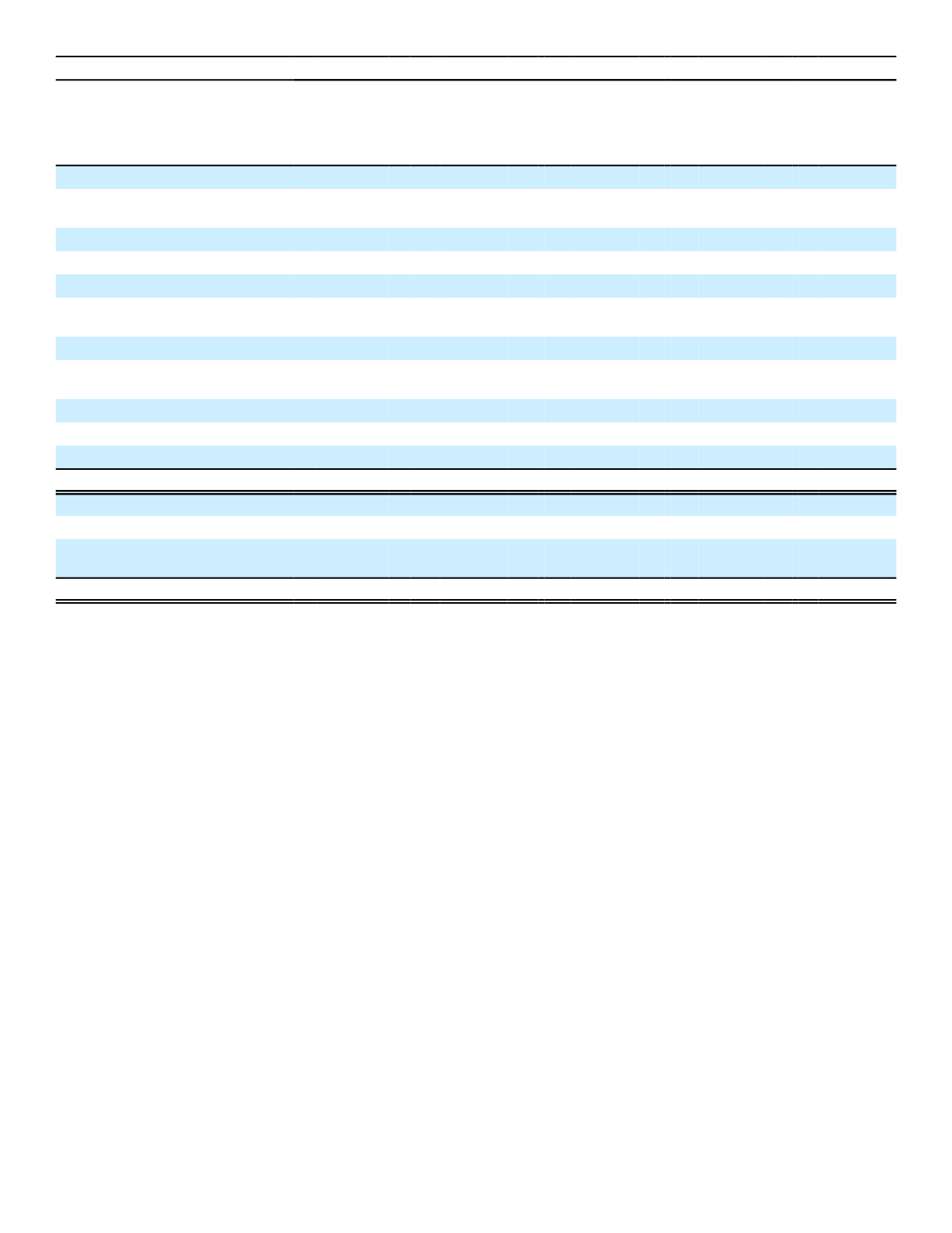

2015
(In millions)
Carrying
Value
Quoted Prices in
Active Markets
for Identical
Assets
(Level 1)
Significant
Observable
Inputs
(Level 2)
Significant
Unobservable
Inputs
(Level 3)
Total
Fair
Value
Assets:
Securities held to maturity,
carried at amortized cost:
Fixed maturities:
Government and agencies
$ 20,004
$23,391
$ 0
$ 0
$ 23,391
Municipalities
341
0
415
0
415
Mortgage and asset-backed
securities
36
0
12
26
38
Public utilities
3,092
0
3,203
0
3,203
Sovereign and
supranational
2,555
0
2,711
0
2,711
Banks/financial institutions
4,431
0
4,546
0
4,546
Other corporate
3,000
0
3,216
0
3,216
Other investments
118
0
0
118
118
Total assets
$ 33,577
$23,391
$ 14,103
$ 144
$ 37,638
Liabilities:
Other policyholders’ funds
$ 6,285
$ 0
$ 0
$ 6,160
$ 6,160
Notes payable
(excluding capital leases)
4,951
0
0
5,256
5,256
Total liabilities
$ 11,236
$ 0
$ 0
$11,416
$ 11,416
Amounts have been adjusted for the adoption of accounting guidance on January 1, 2016 related to debt issuance costs.
Fair Value of Financial Instruments
U.S. GAAP requires disclosure of the fair value of certain financial instruments including those that are not carried at
fair value. The carrying amounts for cash and cash equivalents, other investments (excluding loan receivables),
receivables, accrued investment income, accounts payable, cash collateral and payables for security transactions
approximated their fair values due to the nature of these instruments. Liabilities for future policy benefits and unpaid policy
claims are not financial instruments as defined by U.S. GAAP.
Fixed maturities, perpetual securities, and equity securities
We determine the fair values of our fixed maturity securities, perpetual securities, and public and privately issued
equity securities using the following approaches or techniques: price quotes and valuations from third party pricing
vendors (including quoted market prices readily available from public exchange markets) and non-binding price quotes we
obtain from outside brokers.
A third party pricing vendor has developed valuation models to determine fair values of privately issued securities to
reflect the impact of the persistent economic environment and the changing regulatory framework. These models are
discounted cash flow (DCF) valuation models, but also use information from related markets, specifically the CDS market
to estimate expected cash flows. These models take into consideration any unique characteristics of the securities and
make various adjustments to arrive at an appropriate issuer-specific loss adjusted credit curve. This credit curve is then
used with the relevant recovery rates to estimate expected cash flows and modeling of additional features, including
illiquidity adjustments, if necessary, to price the security by discounting those loss adjusted cash flows. In cases where a
credit curve cannot be developed from the specific security features, the valuation methodology takes into consideration
other market observable inputs, including: 1) the most appropriate comparable security(ies) of the issuer; 2) issuer-
specific CDS spreads; 3) bonds or CDS spreads of comparable issuers with similar characteristics such as rating,
geography, or sector; or 4) bond indices that are comparative in rating, industry, maturity and region.
125


















